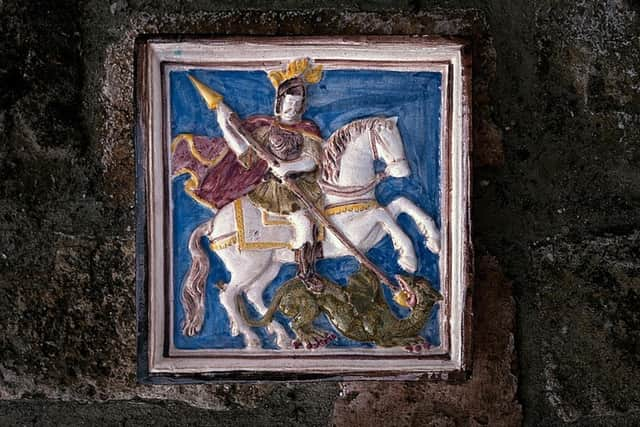Column: The mythology surrounding St George is certainly a rich one
and live on Freeview channel 276
Certainly, the mythology surrounding him provides a lot for the imagination to work on.
In one version he is a Christian martyr – condemned to death by the Roman emperor for refusing to renounce his faith. In another version, he is a dragon-slayer.
Advertisement
Hide AdAdvertisement
Hide AdAs a martyr, he may be understood as ascending to heaven after his death. But in the rural folk culture of England he became associated with what we call ‘fertility myth’: specifically, he was assumed to take the role of the dying and reviving god of vegetation.


That’s why he is celebrated in the spring, and why he is associated with such symbolic figures as Green George, Jack in the Green and the Green Man.
Morris dancing celebrates his rebirth and reaffirms the endless cycle of nature.
As slayer of the dragon, he clearly belongs to ‘hero myth’. In many versions of his story he rescues a princess who is about to be sacrificed to a monster which is also threatening to lay waste the country.
Advertisement
Hide AdAdvertisement
Hide AdIn a Christian perspective it is possible to relate George’s story to what I call ‘deliverance myth’. George, in slaying the dragon, points the way to a future liberation for all God’s people – as told in the Book of Revelation.


Michael the archangel defeats Satan, depicted as a dragon, and at the same time the demonic kingdom of Babylon is overthrown.
All this is implicit in our celebration of St George’s Day. It carries a promise for England itself that the land will be renewed annually in the seasonal cycle, that heroism is still possible in our country and that Albion (the mythical name for England) will be redeemed.
The myth and ritual of St George are reaffirmed in a song by Richard Thompson called ‘The New St George’. It calls on the working people of England to heroically defend the land from corrupt politicians, greedy employers and irresponsible landowners.
Listen to his original and also to the version recorded by the Albion Band: two very different renditions, but equally inspiring. (Both are available on YouTube.)